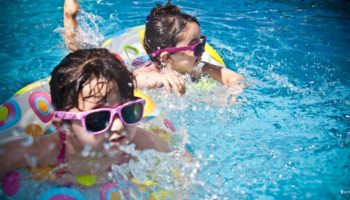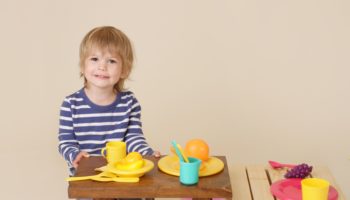Bobbi Philson
Music is a powerful tool that early childhood teachers can use to support and nurture many developmental domains: social-emotional, physical, cognitive, and language/literacy. Additionally, vital brain connections are being formed during these early years from 0-3. Being intentional about integrating music into your classroom routines will help you to identify developmental milestones as they are achieved. Here are some suggestions in each domain area for incorporating music in your daily activities with infants and toddlers:
Social-Emotional:
Music is naturally a social and shared experience. Babies and toddlers learn to practice self-regulation as they are soothed by lullabies. Children can also begin to understand feelings through music as they learn to discriminate happy and sad sounds. Music experiences with instruments encourage positive peer interactions as they form a “band.” Because sharing is not required, children can play peaceably together with instruments.
Play music during difficult transitions such as nap or drop-off. You can create a little song for each child as you hold and calm him. Notice what rhythm each child seems to enjoy most, and use their names in the songs you sing.
For mobile children, organize a music parade, play Freeze Dance (stop moving when the music stops), or explore the instruments together. Set up a music area with a variety of instruments that are accessible for free play for much of the day, rather than bringing them out only for “special” music activities.
Physical:
Music supports both gross motor development (movement) and fine motor development (playing instruments). Children learn balance and body awareness as they dance. Bilateral coordination (crossing the midline) involves using both sides of the body together, like playing a drum with both hands, dancing the “Hokey Pokey” or using a maraca by changing hands.
Help babies move their bodies while listening to music, changing with the tempo of the music. Lay them on the floor and move their arms or legs to the beat.
For toddlers, choose songs like “Head, Shoulders, Knees, and Toes” and the “Hokey Pokey” to encourage understanding of body parts. Introduce creative movement experiences when you sing or play music with older toddlers, so they can create their own way of dancing to music.
Cognitive:
Allow babies to practice cause and effect as they explore instruments, whether purchased or homemade. Toddlers can associate songs with activities, so use the same songs for clean-up and other transitions every day. Play a game of “Fast and Slow,” playing music with different beats and moving or playing instruments in time to the music.
Children can learn counting in songs (“One, Two, Buckle My Shoe,” “Five Little Monkeys,” etc.). Most music has a pattern and sequence, critical to building early math and literacy skills. Children strengthen their memory skills when they learn songs.
Language/Literacy:
Sing simple songs to babies, including hand gestures (“Wheels on the Bus,” “Twinkle Twinkle Little Star”). For toddlers, putting words and phrases together builds their language skills. Using music from other cultures gives them new vocabulary. Songs can be used to tell stories using puppets, felt board cutouts, or pictures, which helps children understand sequence. Phonemic awareness (hearing and recognizing different sounds) is supported, since most songs have rhyme in them.
When you are intentional and build specific music activities into your weekly lesson plans, you can highlight each of these developmental domains and individualize appropriately for each child. For more information and ideas, here are links to articles:
Beyond Twinkle Twinkle
Sing With Me Baby
The authors of the ITERS-R remind us in All About the ITERS-R, that although music is a good thing, too much music at the wrong time is not good. Music should be used for musical experiences and not as background sound that increases the noise level in the room. Continuous background music interferes with children’s need to listen to spoken language, crucial for speech development. (All About the ITERS-R, p. 238)
Whether or not you can “carry a tune in a bucket,” singing to and with children is vital to their growth in all development domains. So, croon, serenade, warble, and chant to your heart’s content!



